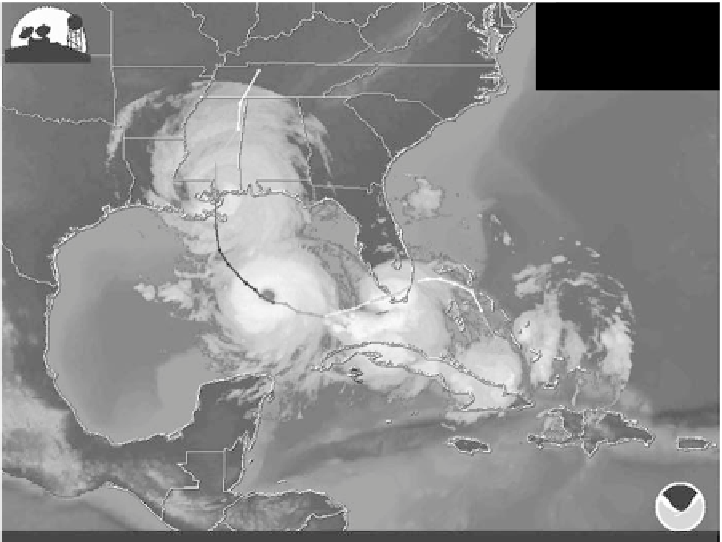Geoscience Reference
In-Depth Information
Image index
1: 2005AUG23/21: 15: 00UTC
2: 2005AUG26/06: 15: 00UTC
3: 2005AUG26/07: 15: 00UTC
4: 2005AUG29/14: 45: 00UTC
CIMSS
4
2
3
1
Tropical depr
Tropical storm
Category 1
Category 2
Category 3
Category 4
Category 5
NOAA
1
Montage of Katrina
Goes-12/Infrared
UW-CIMSS
McIDAS
Figure 7.2
Hurricane Katrina track. (Photo courtesy of the NOAA.)
groups plays a critical role in preparedness. To the extent that we can incorporate
them into the national effort, we will be reducing the burden on other response
resources so that federal, state, and local responders can concentrate our energies
on those with the greatest need.
Private sector companies own and operate 85% of the nation's critical infra-
structure. Transportation, electricity, banking, telecommunications, food supply,
and clean water are examples of services relying on infrastructure that have become
basic aspects of our daily lives. Yet, these services are often only noticed when they
are disrupted and when the American public expects speedy restoration. In fact, the
nation relies on “critical infrastructure” to maintain its defense, continuity of gov-
ernment, economic prosperity, and quality of life. The services provided by these
interconnected systems are so vital that their disruption will have a debilitating
impact on national security, the economy, or public health and safety.
Companies are responsible for protecting their systems, which comprise the
majority of critical infrastructure. Because of this, private sector preparation and
response is vital to mitigating the national impact of disasters. Government actions
in response to a disaster can help or hamper private sector efforts. However, gov-
ernments cannot plan to adequately respond unless the private sector helps them







